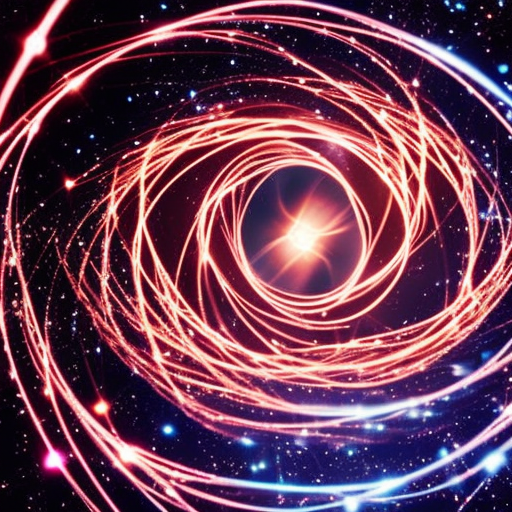Summary:
The expanding universe theory, also known as the Big Bang theory, states that the universe began as a singularity and has been expanding ever since. This theory is supported by various pieces of evidence, including the observed redshift of distant galaxies and the cosmic microwave background radiation. The expansion of the universe is driven by dark energy, a mysterious force that counteracts gravity and causes the acceleration of cosmic expansion. While the theory has been widely accepted, there are still many unanswered questions about the nature of dark energy and the ultimate fate of the universe.
The Big Bang Theory:
The expanding universe theory is based on the concept of the Big Bang, which suggests that the universe originated from a hot, dense state approximately 13.8 billion years ago. According to this theory, all matter and energy in the universe were concentrated in a singularity, a point of infinite density and temperature. Then, in a fraction of a second, the universe rapidly expanded and cooled, giving rise to the formation of galaxies, stars, and other celestial objects.
Evidence for Expansion:
One of the key pieces of evidence supporting the expanding universe theory is the observation of redshift in the light emitted by distant galaxies. Redshift occurs when light waves stretch as the source moves away from the observer. Astronomers have observed that the light from distant galaxies is consistently redshifted, indicating that they are moving away from us and that the universe is expanding.
Another important piece of evidence is the discovery of cosmic microwave background radiation (CMB). This radiation is a faint glow that permeates the entire universe and is thought to be the remnants of the intense heat of the early universe. The CMB provides strong support for the Big Bang theory and the idea that the universe has been expanding since its inception.
Dark Energy and Cosmic Expansion:
The expansion of the universe is not slowing down but rather accelerating. This acceleration is believed to be driven by a mysterious force called dark energy. Dark energy is a hypothetical form of energy that permeates all of space and has negative pressure, causing it to counteract the force of gravity and push galaxies apart.
While dark energy is still not well understood, it is estimated to make up about 68% of the total energy content of the universe. Its existence was inferred from observations of distant supernovae and the distribution of matter in the universe. The discovery of dark energy was a significant breakthrough in understanding the expansion of the universe and has led to the realization that the fate of the universe is tied to the properties of dark energy.
The Fate of the Universe:
The ultimate fate of the universe depends on the balance between the expansion driven by dark energy and the gravitational pull of matter. If dark energy continues to dominate, the expansion will accelerate, causing galaxies to move farther apart. In this scenario, known as the “Big Rip,” the universe would eventually be torn apart, with galaxies, stars, and even atoms disintegrating.
Alternatively, if the gravitational pull of matter eventually overcomes the effects of dark energy, the expansion could slow down and reverse. This scenario, known as the “Big Crunch,” would result in the universe collapsing back in on itself, potentially leading to another singularity.
Currently, the evidence suggests that dark energy is the dominant force driving the expansion, making the “Big Rip” scenario more likely. However, further research and observations are needed to gain a deeper understanding of dark energy and its implications for the fate of the universe.
In conclusion, the expanding universe theory, supported by evidence such as redshift and cosmic microwave background radiation, suggests that the universe began with the Big Bang and has been expanding ever since. This expansion is driven by dark energy, a mysterious force that counteracts gravity. The ultimate fate of the universe depends on the balance between dark energy and matter, with the possibility of either a “Big Rip” or a “Big Crunch.” However, many questions about dark energy and the fate of the universe remain unanswered, leaving room for further exploration and scientific discovery.












